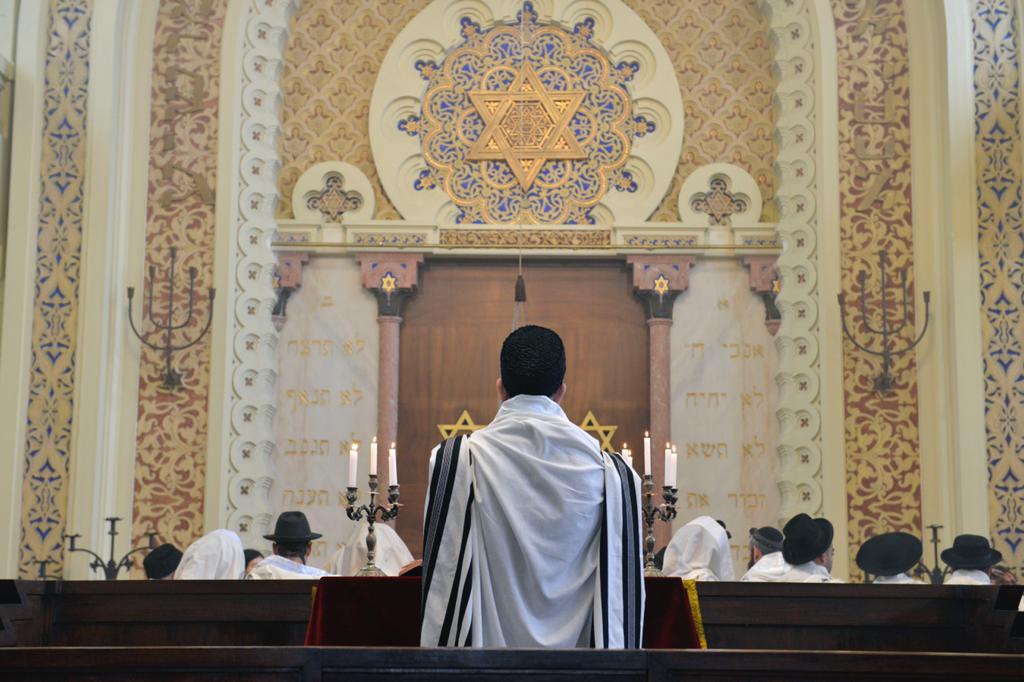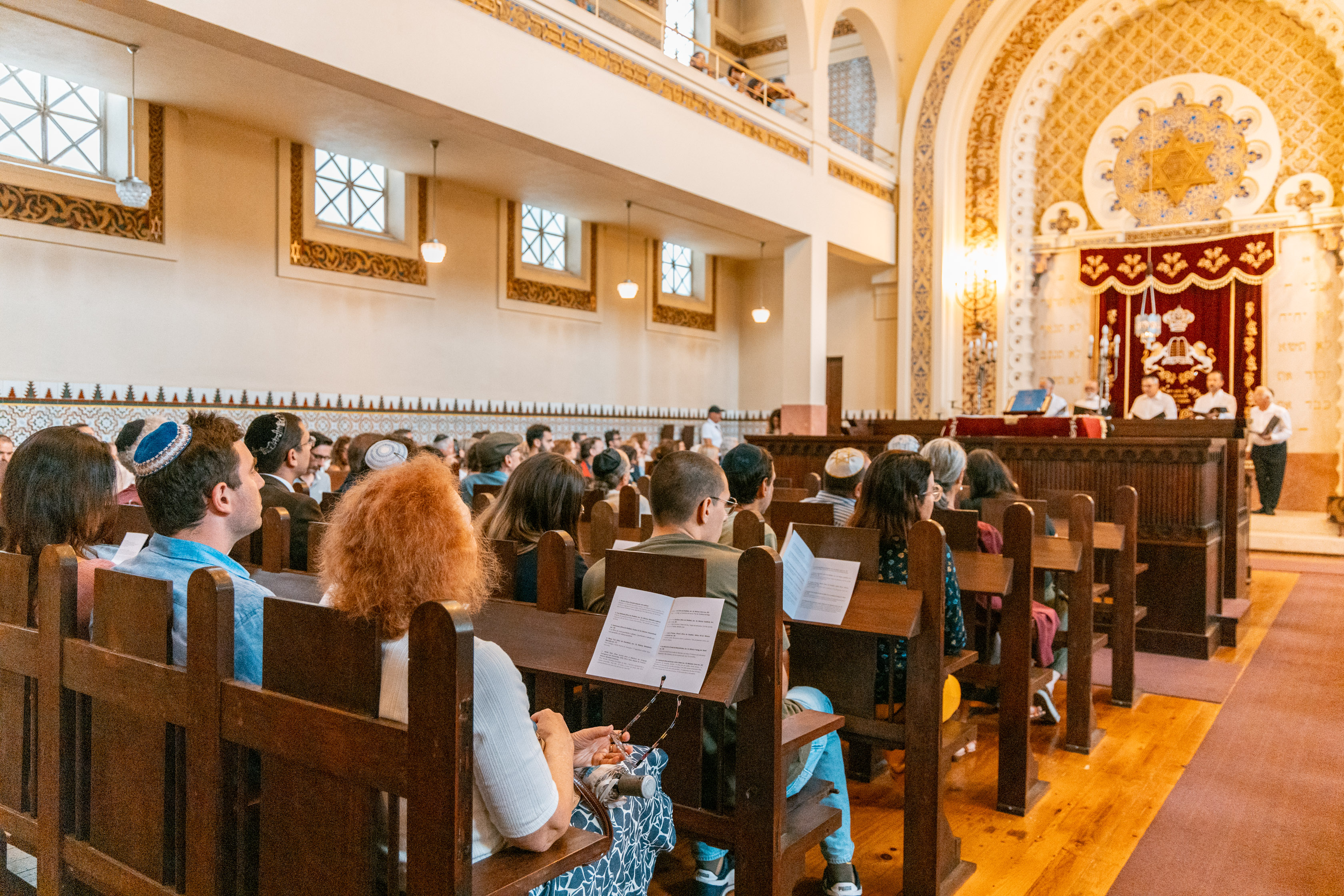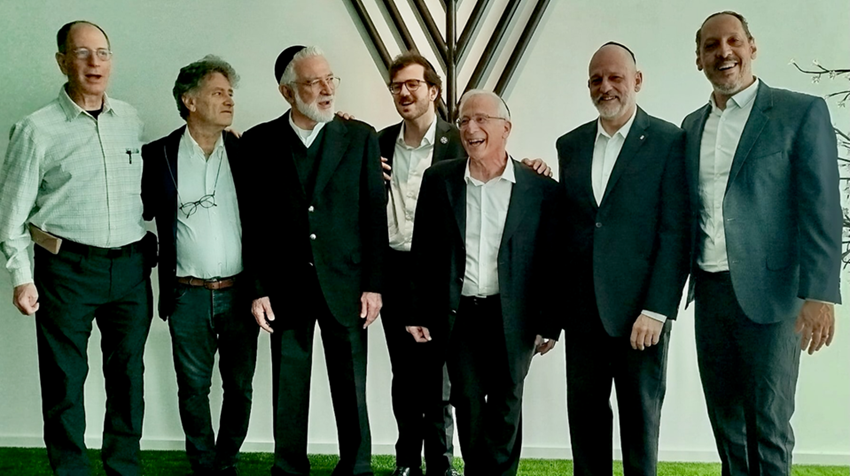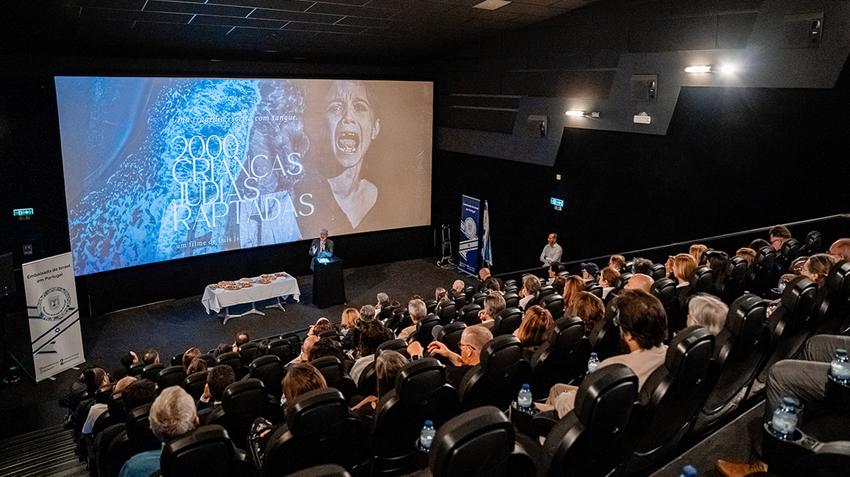The Jewish Communities of Oporto and Antwerp are organizing an event in Belgium to watch the "Sefarad" movie and discuss how well-established and innovative Sefarad communities can be. The initiative is part of a set of screenings of the film that will take place in multiple countries over the next two years.
Delegations from both communities gathered to talk about the situation of Judaism in Europe and the case of Soviet anti-Semitism that took place in Portugal in an attempt by desperate elites to destroy the only really relevant community in the country and its leaders.
On behalf of the directorate of the Jewish Community of Oporto, Samson Elijah gave the Rav Cohen of the Portuguese Synagogue in Antwerp the book "The Millennium of the Jewish Community of Oporto, Chronology 1923-2023." At the same time, Rav Cohen donated to the Oporto Community the book about the Portuguese Synagogue in Antwerp "Un Siècle de Lumière, La Communauté Juive Sefarade d' Anvers 1913-2013."
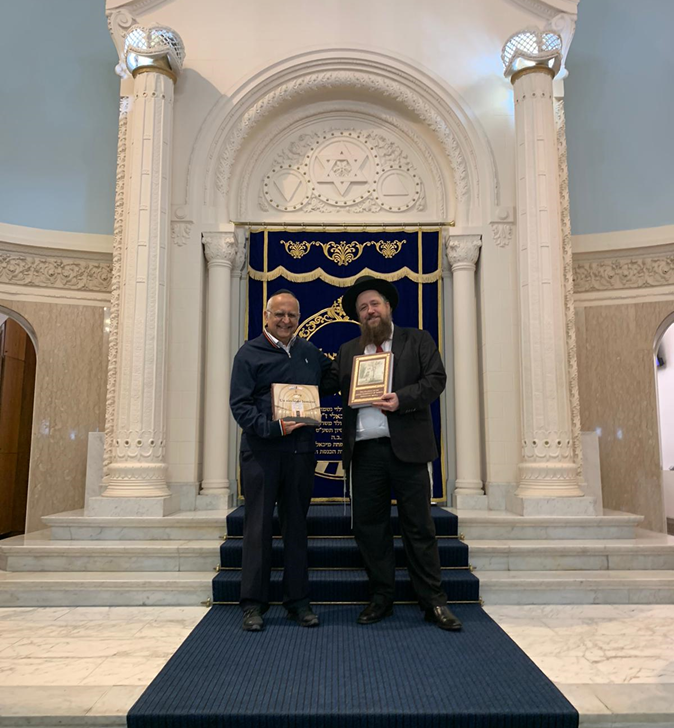
Samson Elijah and Rav Cohen
About the movie “Sefarad”
1923. A Portuguese army captain converted to Judaism, by the name of Barros Basto, and about twenty Jewish merchants from central and eastern Europe found the Jewish Community of Porto. Very soon this community, made up mainly of foreigners, is shaken by news that there are pockets of descendants of 15th century Jews in a number of Portuguese villages. They still perform Jewish rites (with hints of Christianity) and are convinced that they are the last Jews on earth.
The discovery of the Portuguese “Marranos” had a huge sentimental impact on the international Jewish community. Lucien Wolf, the famous lawyer, journalist and defender of Jewish rights, travels to Portugal on behalf of the Anglo-Jewish Association to analyse the situation of the “crypto-Jews”, as they are also known. His final report is in favour of providing material and moral support to carry out the “rescue” of the Marranos (rescue to official Judaism), which Captain Barros Basto is willing to undertake from the city of Porto.
The Jewish world is divided in this regard. Many declare that the Marranos are not Jews for they cannot prove their Jewish descent in the matrilineal line, nor do they believe that such Marranos can convert to Judaism according to Jewish law, given that “Marranism” is a religion in itself, practiced in an environment of poor culture, with irreversible signs of Christianity.
Despite the contrary voices, Captain Barros Basto believes in the project and is soon busy travelling from place to place, by train, on foot, sometimes on horseback, going yo the rescue of the Marranos. It is the start of one of the most romantic stories of the 20 th century. In villages in Trás-os-Montes and in the Beira regions Barros Basto witnesses incredible religious rituals. The faith of the Marranos – men, women and children forsaken by the world four centuries earlier – make him declare that he will pursue the “Rescue Work” till the end of his days.
To carry out this human rescue programme, unequalled in the history of mankind, the Jewish Community of Porto sets up a school and wishes to build the largest synagogue of the Iberian Peninsula, with the financial support of international Jewish organisations. The idea behind building a great synagogue was to ensure that the Marranos did not feel inferior with regard to the Catholics. In terms of beauty and grandeur the new synagogue would rival the most majestic of churches.
However, the “Rescue Work” failed, for contrary to everyone’s expectations the Marranos were not receptive to the idea. Complex and hermetic, official Judaism which is practised in the Hebrew language, rejected many of the Marranos’ practices that had been influenced by Christianity. However much they liked Captain Barros Basto, they mistrusted a foreign-led rescue programme and were not willing to add anything to what they already did or to correct their practices which had been influenced by Christianity.
Then, the Captain was expelled from the army for having taken part in circumcisions (a case that became known as the “Portuguese Dreyfus" case) and this further alienated the Marranos.
The inauguration of the great Kadoorie Mekor Haim synagogue, in 1938, was incredible. But by then the “Rescue Work” was practically dead. There were few Marranos praying in the synagogue. It was the start of a progressive process of assimilation which led to the extinction of the Marrano communities in the villages owing to mixed marriages, emigration, liberalisation of customs and the weakening of religious ties.
The period of Nazism and the Holocaust brought hundreds of refugees to Porto, their life in ruins. The Jewish community in this city became practically a community of refugees. Old and young, sad, distraught, with no worldly goods, they cried for their families whose fate they did not know. Many slept and wept here and there in the synagogue. We hear moving stories, all similar, all different. With the exception of a few, who state their wish to settle in Portugal, most are only waiting for the moment to depart to other countries where they can start their lives again. “Europe – they say – never again!”
Times passes. The war ends. Following the departure of the refugees the insignificance of the Jewish Community of Porto in terms of number is quite obvious, as is the exaggerated dimension of its synagogue. One of the smallest communities of Europe has one of the largest synagogues. The absence of the faithful during prayers in the temple means that the Community’s religious leader at the time, Srul Finkelstein, prays and sings, many times totally alone, in the vastness of the echoing synagogue.
A very religious man, for whom everything in life has deep meaning, Finkelstein often asks himself why God allowed the construction of such a large and imposing synagogue in the city of Porto, where the number of Jews is so small. He begins to convince himself that the divine plan behind the synagogue’s construction was not to rescue the Marranos (descendants of the Jews who fell victim to the Edict of Expulsion and remained in Portugal), but rather of the Sephardic Jews of Portuguese origin (who descend from those who as a result of that same edict fled to the former Ottoman Empire and other places) and who will return one day…
In those desolate decades, Porto bore witness to the traumatic life of Emil Oppenheim, a German refugee, former lawyer and political activist in Germany, who lived out his life working in a modest laundry close to the synagogue. When he died, in 1982, no Jew from Porto went to the cemetery and the Kaddish (Jewish prayer for the dead) was not recited, although it had been his ardent desire, for the Jewish Community in this city was down to its lowest number and nobody heard of his death.
One day, a nun who was a nurse in the Catholic Church and had treated Oppenheim in the last years of his life, visited his tomb and alone she recited the Kaddish: "Yitgadal v’yitkadash sh’mei raba...!"
It was in the year 2018 when a strong, renewed Jewish Community of Porto held a special Shabbaton to recite the Kaddish in memory of Emil Oppenheim. Many of those present were Sephardic Jews of Portuguese origin, who had recently arrived in Portugal for, five centuries after D. Manuel’s edict had led to the mass exile of the Jewish community, a new law promoted the return to this land they had been forced to forsake. And in Porto, in the great synagogue, the Jews again sang in praise of Adonai.































